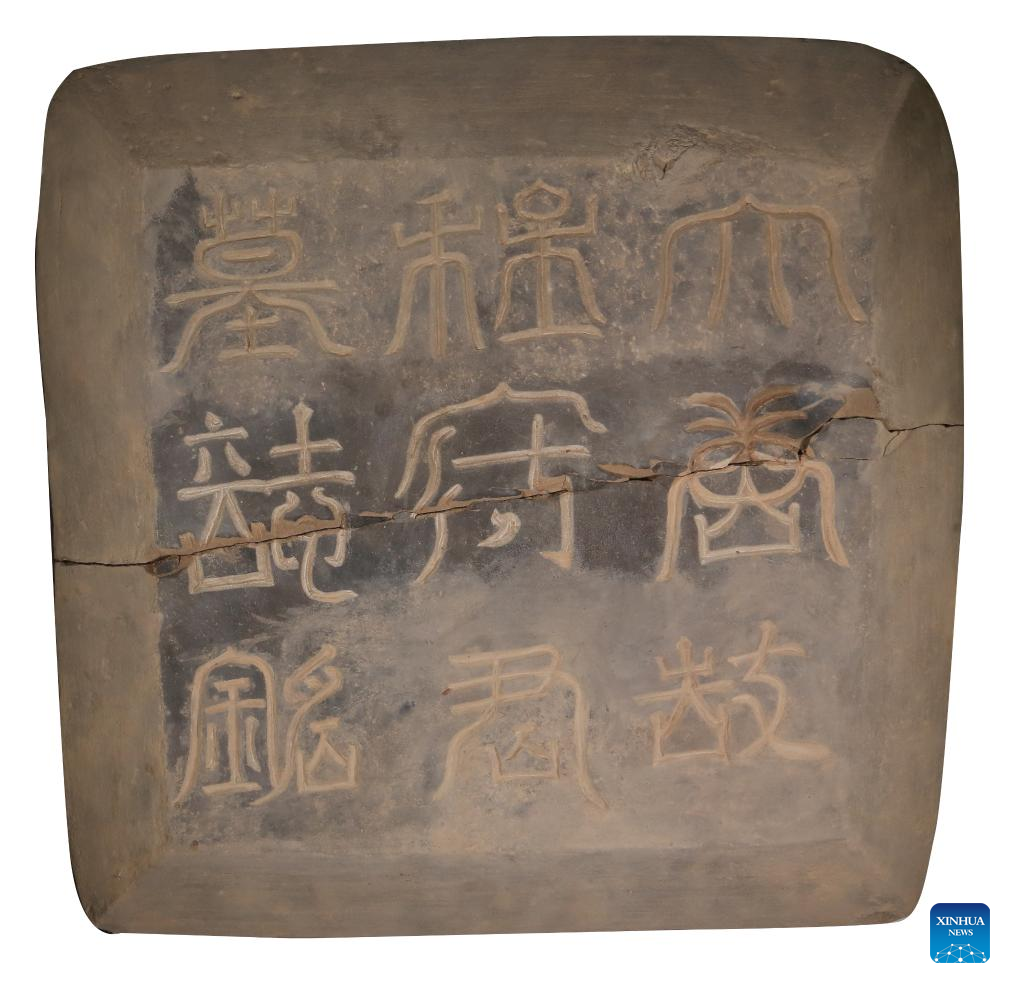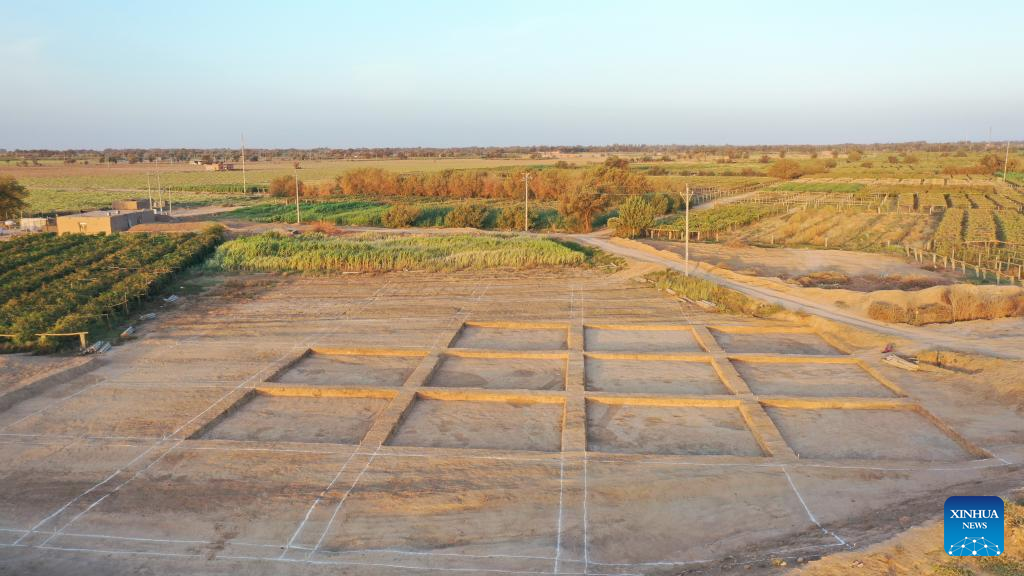Epitaph of high-ranking official in Tang Dynasty discovered in Xinjiang
From:XinhuaAuthor: 2024-03-07 15:42

This undated photo shows the front face of the epitaph cover of Cheng Huan, the owner of a large Tang Dynasty tomb. A previously anonymous epitaph discovered in 2022 in northwest China's Xinjiang Uygur Autonomous Region has been identified as paying tribute to a high-ranking Tang Dynasty (618-907) official, local authorities said. (The Academia Turfanica/Handout via Xinhua)
A previously anonymous epitaph discovered in 2022 in northwest China's Xinjiang Uygur Autonomous Region has been identified as paying tribute to a high-ranking Tang Dynasty (618-907) official, local authorities said.
From May to November 2022, the Xinjiang Institute of Cultural Relics and Archaeology and Academia Turfanica carried out a rescue excavation of the east Badamu cemeteries, exploring 11 Tang Dynasty tombs, including one large tomb that contained the epitaph.
In the Tang Dynasty, the central government strengthened its rule over the Western Regions by establishing the Grand Anxi Frontier Command and the Grand Beiting Frontier Command to administer the Western Regions.
The front face of the tombstone was inscribed with nearly 700 characters, but only around 480 characters could be identified. A thorough investigation identified the owner of the tomb to be Cheng Huan.
Cheng hailed from Handan City in Hebei Province, north China, and was the deputy commander of the Grand Beiting Frontier Command when he died at 63 in Xizhou -- referring to the Turpan area in Xinjiang today, according to Zhang Hailong, with the Academia Turfanica.
The finding indicate the Tang Dynasty central government's effective governance of the Western Regions, a discovery which is of great value to the study of the local military and political institutions.
Experts said that from Cheng's career experience, it can be seen that the Tang Dynasty official system was effectively implemented in the Western Regions.
Chen Qiwen, also with the Academia Turfanica, said, apart from the epitaph, many painted clay figurines, pots, pottery lamps, and beads were unearthed from Cheng's tomb, which proved that the inheritance and use of calligraphy in the area followed the cultural characteristics of the central plain areas of China.

This undated aerial drone photo shows the east Badamu cemeteries in Turpan, northwest China's Xinjiang Uygur Autonomous Region. A previously anonymous epitaph discovered in 2022 in northwest China's Xinjiang Uygur Autonomous Region has been identified as paying tribute to a high-ranking Tang Dynasty (618-907) official, local authorities said. (The Academia Turfanica/Handout via Xinhua)
Edit:董丽娜
The copyright of the article and the picture belongs to the original author. If there is any infringement, please contact to delete it